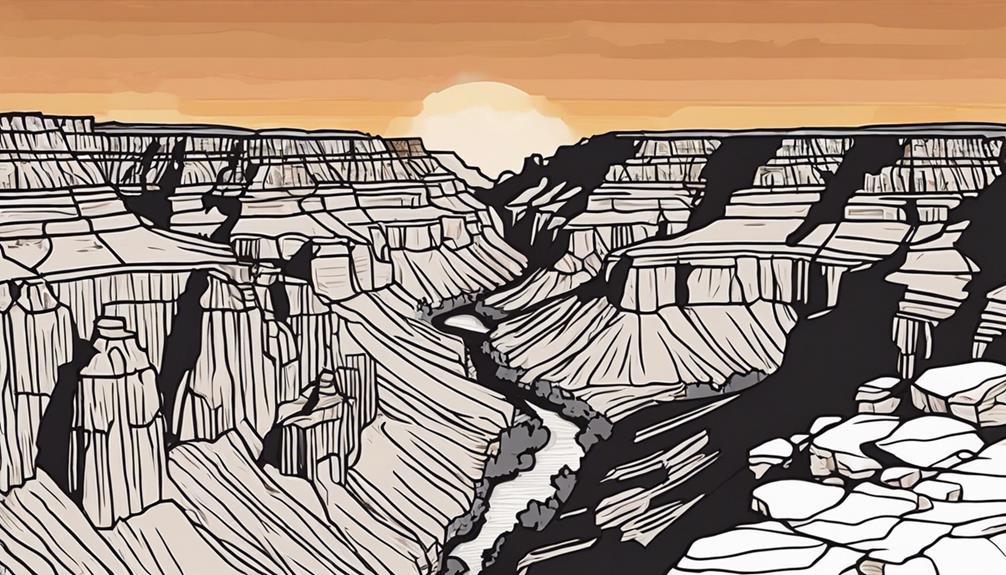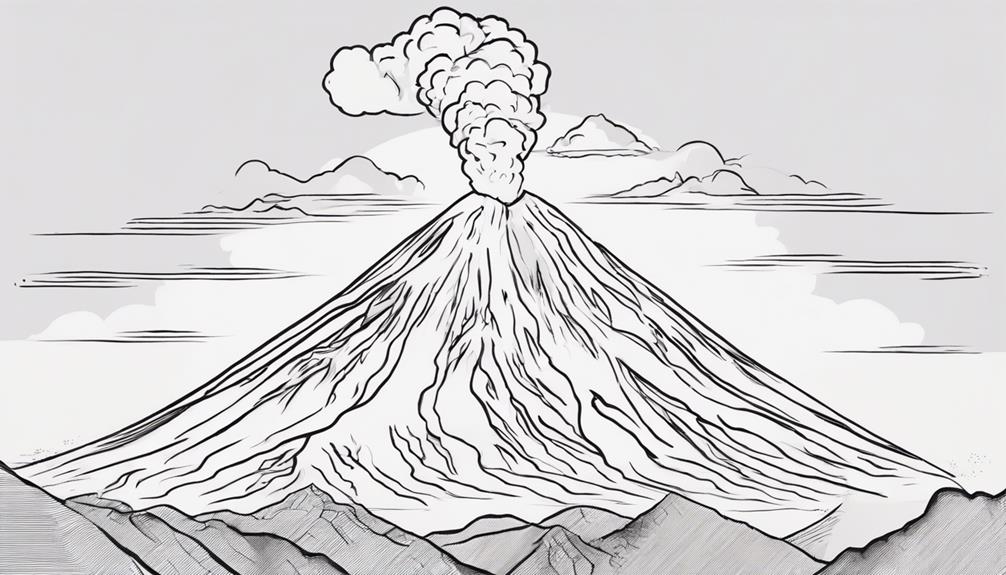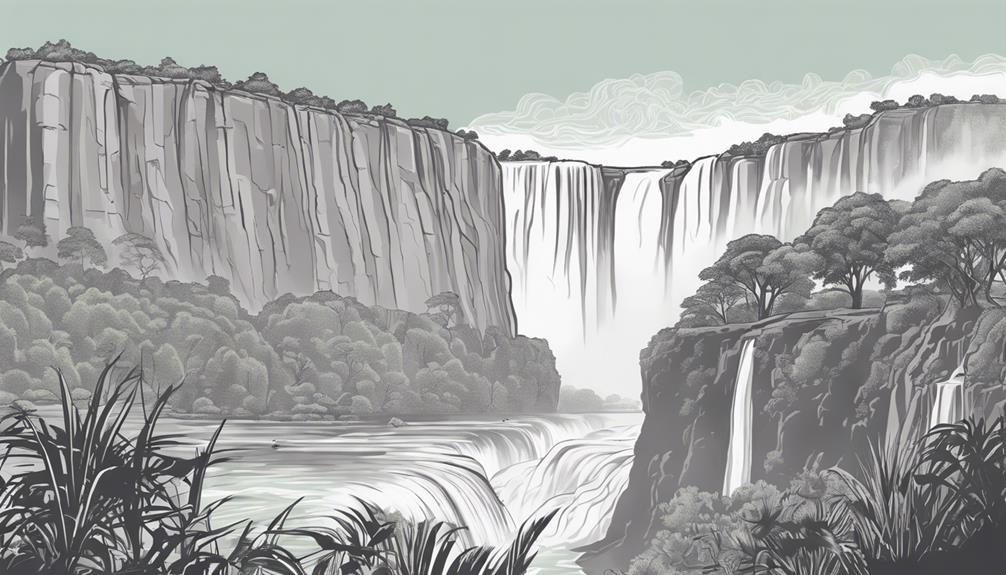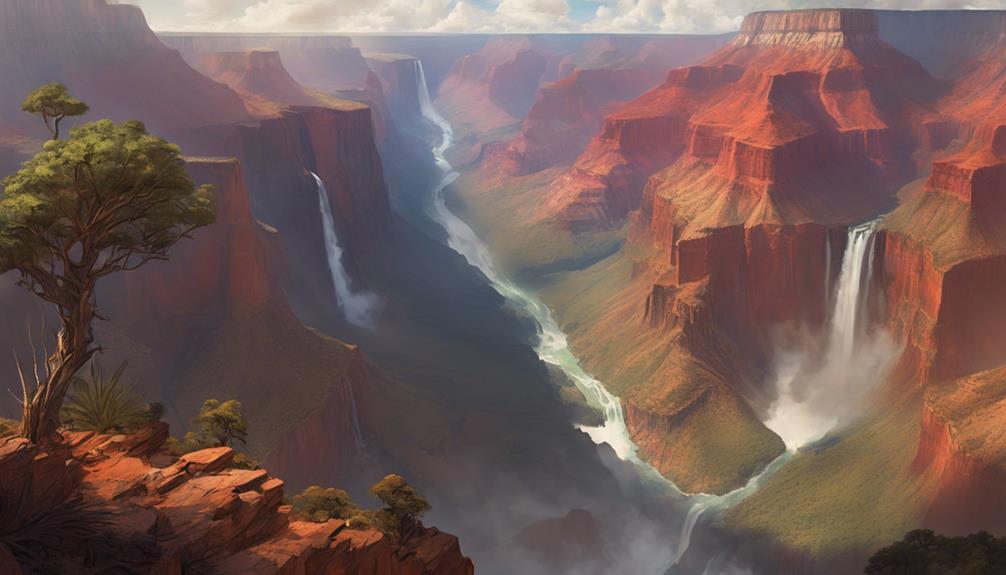The concept of the Seven Wonders of the Natural World has long fascinated scientists and explorers alike, prompting a quest to identify the most remarkable natural phenomena that grace our planet. These wonders, ranging from the ethereal Northern Lights to the formidable Mount Everest, each hold a unique allure that captivates both researchers and enthusiasts. By delving into the intricate details and mysteries of these natural wonders, we uncover a deeper understanding of the forces that have shaped our world and continue to intrigue us with their grandeur and complexity.
Key Takeaways
- Mount Everest stands as the highest peak, challenging climbers with extreme conditions.
- The Grand Canyon showcases Earth's history through vast rock formations and diverse ecosystems.
- The Harbor of Rio De Janeiro integrates unique rock formations with urban development harmoniously.
- The Great Barrier Reef faces threats but remains the world's largest coral reef system, emphasizing conservation efforts.
Mount Everest

Mount Everest, the highest peak on Earth, rises majestically at 8,848 meters (29,029 feet) above sea level, forming a formidable part of the Himalayan mountain range known for its challenging terrain and severe weather conditions. The Himalayas, home to Mount Everest, present some of the most treacherous terrains on the planet, characterized by towering peaks, deep valleys, and glaciers. The geological composition of Mount Everest primarily consists of metamorphic and sedimentary rocks, shaped over millions of years through tectonic forces and erosion.
The extreme weather conditions on Mount Everest can be unforgiving, with temperatures plummeting below -60°C (-76°F) and winds exceeding hurricane force. These harsh environmental factors pose significant challenges to climbers attempting to summit the peak. Local communities in Nepal and Tibet revere Mount Everest, referring to it as Sagarmatha and Chomolungma, respectively, attributing cultural and spiritual significance to the mountain. Despite the risks and difficulties, Mount Everest continues to captivate adventurers and researchers alike, drawing them to explore its awe-inspiring heights and rugged landscapes.
Paricutin Volcano
Emerging abruptly in a farmer's field in Michoacán, Mexico in 1943, the Paricutin Volcano swiftly rose to become the youngest active volcano in the Northern Hemisphere. Growing rapidly, it reached a height of 424 meters (1,391 feet) in just nine years. The volcano's eruption was characterized by extensive lava flows and ash, which covered an area spanning 25 square kilometers. Paricutin's volcanic activity attracted both scientists and tourists alike, offering a unique opportunity to witness the raw power of nature up close.
Visitors can ascend the volcanic peak, providing a rare chance to explore the surrounding lava fields and gain insights into the geological processes that shape our planet. The Paricutin Volcano stands as a testament to the ever-changing landscape of the Earth, showcasing the dramatic impact that volcanic eruptions can have on the environment. Its formation and evolution continue to intrigue researchers and nature enthusiasts, solidifying its status as a remarkable natural wonder.
The Grand Canyon

The Grand Canyon stands as a monumental natural formation, stretching 446 kilometers in length and reaching widths of up to 29 kilometers at its broadest section. Its geological features are a testament to millions of years of Earth's history, with the vivid red and orange hues of the canyon walls offering a visual timeline of its formation. Exploring the vastness of the Grand Canyon allows for a profound appreciation of the forces that shaped this awe-inspiring landscape.
Vastness of Grand Canyon
Why does the vastness of the Grand Canyon in Arizona captivate visitors from around the world? Spanning 446 kilometers in length and reaching widths of up to 29 kilometers, the Grand Canyon offers breathtaking panoramic views that showcase 1.2 billion years of Earth's geological history through its layered rock formations. The canyon's geological history, with its diverse array of rock layers, provides a unique opportunity for visitors to witness the Earth's past. Engaging in activities such as hiking, helicopter rides, and river rafting allows visitors to immerse themselves in the immense scale of this natural wonder. The Grand Canyon's striking deep red and orange hues further enhance its allure, making it a must-visit destination for those seeking to witness the grandeur of nature.
Geological Formations Explained
Exploring the geological formations of the Grand Canyon unveils a rich tapestry of Earth's history woven through its layered rock formations. Spanning 446 kilometers in length and reaching widths of up to 29 kilometers, the Grand Canyon showcases an astonishing 1.2 billion years of Earth's geological history. Each rock layer tells a unique story, from ancient marine fossils to volcanic activity, providing a glimpse into the processes that have shaped the landscape over millennia. The canyon's deep red and orange hues not only create a visually striking spectacle but also serve as a testament to the forces of erosion and deposition that continue to sculpt this natural wonder. Diverse wildlife and ecosystems further enrich the Grand Canyon, making it a hub for exploration and scientific study of Earth's geological past.
Victoria Falls
Nestled on the border between Zambia and Zimbabwe, Victoria Falls stands as a majestic natural wonder renowned for its powerful cascades and breathtaking beauty. Known as 'the smoke that thunders,' this awe-inspiring waterfall is one of the largest globally, plunging an impressive 108 meters (354 feet). The mist and thunderous sound created by the falls add to its allure, captivating visitors from around the world.
Victoria Falls is best experienced during April when the water flow reaches its peak, offering a truly mesmerizing sight. On the Zimbabwean side, visitors can enjoy excellent facilities and stunning viewing platforms that provide unparalleled views of the falls. The combination of natural beauty, sheer power, and the surrounding lush vegetation makes Victoria Falls a must-see destination for nature enthusiasts and adventure seekers alike.
Whether witnessing the cascading waters from afar or feeling the mist on your skin from up close, Victoria Falls offers an unforgettable experience that highlights the raw and unbridled beauty of the natural world.
The Harbor of Rio De Janeiro
The Harbor of Rio de Janeiro stands out for its unique rock formations and offers breathtaking panoramic views of the surrounding landscape. With depths up to 17 meters and an area covering 412 sq km, this natural bay is a sight to behold. Its integration of urban development and natural beauty creates a visually striking contrast that contributes to Rio de Janeiro's picturesque setting.
Unique Rock Formations
Amidst the urban landscape of Rio de Janeiro lies the Harbor of Rio de Janeiro, a natural marvel characterized by unique rock formations and unparalleled visual grandeur. The rock formations in this bay contribute to its natural beauty and are renowned worldwide for their distinctiveness. These formations, predominantly granite peaks, create a breathtaking panorama that merges seamlessly with the cityscape. The Harbor of Rio de Janeiro, with its geological wonders, stands as a testament to the harmonious coexistence of nature and civilization. Visitors can witness the world-class beauty of these rock formations from various vantage points, such as Corcovado Mountain, offering an unmatched perspective of this extraordinary natural spectacle.
| Rock Formations | Natural Beauty | World |
|---|---|---|
| Unique | Breathtaking | Renowned |
| Granite Peaks | Visual Appeal | Global |
| Geological Wonders | Panoramic Views | International |
Breathtaking Panoramic Views
The unique geological features of the Harbor of Rio de Janeiro offer unparalleled opportunities for experiencing breathtaking panoramic views of this natural wonder. The bay, encompassing 412 sq km, is the world's largest natural bay by volume, with depths reaching up to 17 meters. Surrounded by iconic landmarks like Sugarloaf Mountain, the bay seamlessly merges urban life with nature, creating a visually stunning area. Known as Guanabara Bay in Brazil, it provides a picturesque backdrop to the vibrant city of Rio de Janeiro. The granite peaks surrounding the bay, including the famous Corcovado Mountain, offer a striking contrast against the azure waters, captivating all who gaze upon this magnificent panorama.
- Sugarloaf Mountain: Towering majestically, framing the bay in natural splendor.
- Corcovado Mountain: Providing a bird's eye view of the bay's grandeur.
- Azure Waters: Contrasting with the rugged granite peaks, enhancing the visual appeal.
Great Barrier Reef
Nestled within the azure waters off the coast of Queensland, Australia, lies the expansive and biodiverse marvel known as the Great Barrier Reef. Spanning over 2,300 km, it is the world's largest coral reef system, comprising 2,900 individual reefs that support a rich variety of marine life. This underwater ecosystem serves as a critical habitat and breeding ground for numerous species, attracting visitors worldwide for activities like scuba diving and snorkeling to witness its vibrant marine biodiversity.
However, the Great Barrier Reef faces significant challenges, primarily due to the effects of climate change. Coral bleaching, pollution, and overfishing threaten the health and sustainability of this magnificent reef system, emphasizing the urgent need for conservation efforts. Ongoing initiatives focus on promoting sustainable practices to preserve the delicate balance of this marine environment. With continued dedication to conservation, we strive to protect the Great Barrier Reef and ensure the longevity of its awe-inspiring marine ecosystem.
Northern Lights

Resting under the dancing auroras of the night sky lies the mesmerizing natural spectacle known as the Northern Lights, or Aurora Borealis, caused by electrically charged particles from the sun. The Northern Lights are a captivating phenomenon that enchants viewers with its vibrant hues and dynamic movements. Here are three reasons why experiencing the Northern Lights is an emotional and unforgettable journey:
- The ethereal dance of colors in the sky invokes a sense of wonder and awe, leaving spectators in a state of pure amazement.
- Witnessing the Northern Lights against the backdrop of the Arctic Circle's pristine wilderness creates a surreal and magical ambiance that touches the soul.
- The unpredictability and rarity of this natural wonder make each sighting a unique and cherished memory, inspiring a deep appreciation for the mysteries of the universe.
The Arctic Circle serves as a prime location for this celestial spectacle, attracting travelers from all corners of the globe to witness the breathtaking beauty of the Aurora Borealis.
Discovering Mount Everest
Mount Everest stands as an unparalleled natural marvel, challenging adventurers with its towering magnificence and extreme conditions. The mountain's summit presents climbers with formidable obstacles, from treacherous terrain to severe weather patterns, requiring meticulous planning and physical endurance. Despite the risks, conquering Everest symbolizes a pinnacle of human achievement and a testament to the indomitable spirit of exploration.
Everest's Towering Magnificence
Discovering the towering magnificence of Everest reveals a geological marvel that stands as the highest peak on Earth, reaching an impressive 8,848 meters above sea level in the Himalayan mountain range.
- The sheer height of Everest commands awe and respect from all who behold its grandeur.
- The challenging terrain and extreme weather conditions add an element of danger and adventure to the ascent.
- The history and culture surrounding Everest, including its significance to the Sherpa people, enrich the mountain's mystique and allure.
Mount Everest's prominence in the natural world is not only a testament to Earth's geological wonders but also a symbol of human perseverance and exploration.
Climbing Challenges and Triumphs
Climbers embarking on expeditions to conquer the towering magnificence of Everest face formidable challenges and potential triumphs amidst the extreme weather conditions and treacherous terrain of the Himalayan mountain range. Mount Everest, standing at 8,848 meters above sea level, presents climbers with a harsh environment where temperatures can plummet below -60°C during ascents. Despite the breathtaking views that draw adventurers from across the globe, the mountain's history is marked by both successful summits and tragic losses. The allure of conquering Everest's peak is met with the reality of enduring severe weather patterns that demand skill, resilience, and strategic planning from those who dare to undertake the arduous journey to its summit.
Unveiling Paricutin Volcano

Emerging suddenly in 1943 in a farmer's field in Michoacán, Mexico, the Paricutin Volcano swiftly captured the attention of geologists and visitors worldwide. This youngest volcano in the Northern Hemisphere rapidly ascended to a height of 424 meters (1,391 feet) in just nine years, showcasing the raw power of nature in its volcanic peak. The extensive lava flows and ash released by Paricutin covered an area spanning 25 square kilometers, leaving a lasting mark on the landscape.
- Witnessing the birth of Paricutin Volcano invokes a sense of awe and wonder, reminding us of the Earth's dynamic and unpredictable nature.
- Climbing the volcanic peak provides a unique opportunity to appreciate the forces that shape our planet and the resilience of life in harsh environments.
- Exploring the surrounding lava fields offers a glimpse into the aftermath of a volcanic eruption, showcasing both destruction and the potential for new beginnings.
Paricutin's perfectly symmetrical cone from its last eruption in 1952 stands as a testament to the ongoing geological processes that continue to shape our world.
Exploring The Grand Canyon
The transition from the awe-inspiring emergence of Paricutin Volcano to exploring the majestic expanse of the Grand Canyon in Arizona unveils a geological marvel that spans millions of years of Earth's history. Located in Arizona, the Grand Canyon stretches 446 kilometers in length, with widths reaching up to 29 kilometers at its broadest point. This natural wonder showcases an incredible 1.2 billion years of Earth's history through its intricate layers of rock formations. The canyon's rock layers provide a visual timeline of the Earth's geological past, offering a unique opportunity for scientific study and appreciation of the planet's evolution.
Visitors to the Grand Canyon can engage in various activities such as hiking, helicopter rides, and enjoying the panoramic views from designated viewing platforms. The canyon's deep red and orange hues, particularly striking during sunrise and sunset, contribute to its reputation as one of the most visited natural wonders globally. The Grand Canyon's vastness and geological significance make it a must-see destination for those seeking to witness the wonders of nature firsthand.
Experiencing Victoria Falls

Nestled on the border between Zambia and Zimbabwe lies a natural marvel that captivates visitors with its thundering cascades and misty allure – Victoria Falls. As one of the largest waterfalls globally, Victoria Falls plunges a remarkable 108 meters (354 feet), creating a deafening roar and a mesmerizing mist that blankets the surrounding area. To truly experience the grandeur of Victoria Falls, April is the ideal time when water levels peak, enhancing the spectacle.
- Prepare to be awestruck by the sheer power and beauty of the cascading waters.
- Engage your adventurous spirit with thrilling activities like bungee jumping and white-water rafting.
- Soar above the falls on a scenic flight for a breathtaking bird's-eye view of this natural wonder.
On the Zimbabwean side, visitors are treated to excellent facilities and viewpoints that offer stunning perspectives of Victoria Falls. Whether seeking adrenaline-pumping adventures or serene natural beauty, Victoria Falls promises an unforgettable experience for all who venture to witness its majesty.
Witnessing the Northern Lights
Positioned near the Arctic Circle, the Northern Lights, also known as Aurora Borealis, offer a captivating display of colors caused by interactions between electrically charged particles from the sun and the Earth's atmosphere. Norway, with its unique positioning near the Arctic Circle, provides one of the best vantage points to witness this natural phenomenon. The mesmerizing dance of colors, predominantly greens, blues, and purples, creates a magical and awe-inspiring experience for spectators. Traveling further north increases the likelihood of catching this spectacular light show, with Tromso in Norway and Finnish Lapland being popular destinations for Northern Lights enthusiasts. The scientific explanation behind this enchanting display lies in the collision of solar wind and magnetospheric charged particles with the Earth's atmosphere. As these charged particles react with gases like oxygen and nitrogen, they emit varying colors of light, painting the night sky with nature's own light show. Witnessing the Aurora Borealis in Norway promises an unforgettable experience of nature's beauty and mystery.
Frequently Asked Questions
What Is the Official 7 Wonders of the World?
The official wonders of the world, often referred to as modern wonders, encompass architectural and natural marvels. These wonders are selected based on their exceptional characteristics and global significance. The natural wonders specifically highlight the awe-inspiring beauty and splendor of nature, showcasing extraordinary phenomena such as the Aurora Borealis, Grand Canyon, and Mount Everest. This esteemed list serves to recognize and promote the preservation of these remarkable natural treasures.
What Are the 7 Wonders Original of the World?
When exploring the realm of natural formations, one encounters breathtaking landscapes that showcase environmental marvels and ecological wonders. These geographic wonders stand as testaments to nature's beauty and power, captivating all who behold them. From cascading waterfalls to towering mountain ranges, these seven wonders of the natural world offer a glimpse into the awe-inspiring forces that have shaped our planet.
How Many of the Original 7 Wonders Still Exist?
Of the original Seven Wonders of the Ancient World, only one remains standing today, the Great Pyramid of Giza. This iconic structure's current status is a testament to its remarkable preservation efforts and enduring historical significance. With its cultural impact and global recognition, the Great Pyramid continues to attract tourists and researchers alike, serving as a prominent tourist attraction that showcases the ingenuity and craftsmanship of ancient civilizations.
What Is the 8th Wonder of the World?
In the realm of modern marvels and mysterious structures, the Eighth Wonder of the World emerges as a testament to the awe-inspiring forces of nature. This wonder, the Parícutin Volcano in Mexico, captivates with its rapid formation and symmetrical cone shape, showcasing the incredible power and beauty of volcanic phenomena. Visitors can explore this captivating site, marveling at its extensive lava flows and ash-covered landscapes, truly a remarkable addition to the world's wonders.
Conclusion
In conclusion, the Seven Wonders of the Natural World represent the extraordinary beauty and diversity of our planet. These magnificent phenomena serve as a reminder of the wonders of nature and the awe-inspiring power of the Earth. As we marvel at Mount Everest, Paricutin Volcano, The Grand Canyon, Victoria Falls, The Harbor of Rio De Janeiro, and the Northern Lights, we are reminded of the incredible forces at work in shaping our world. Nature truly is a wonder to behold.
